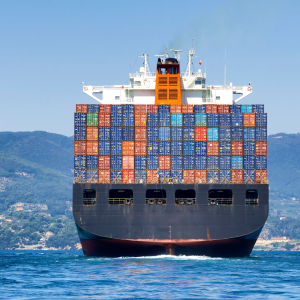 Geopolitical tensions are escalating freight rates, causing delays and rerouting. Learn how these factors affect global trade and what businesses can do to adapt.
Geopolitical tensions are escalating freight rates, causing delays and rerouting. Learn how these factors affect global trade and what businesses can do to adapt.
Geopolitical pressures, from conflicts to trade disputes, significantly impact global logistics, often resulting in rising freight rates and altered shipping routes. For businesses reliant on international shipping, these changes add complexity to supply chains and create unforeseen costs. This article dives into how geopolitical issues affect freight rates and how companies can leverage tools like instant shipping rates and online shipping quotes to manage their shipping expenses effectively.
Disruption of Key Shipping Routes
Geopolitical conflicts have profoundly impacted significant trade routes. For instance, the Red Sea crisis, triggered by recent attacks on vessels, has severely disrupted shipping routes passing through the Suez Canal. Consequently, many shipping lines are diverting around Africa’s Cape of Good Hope—a detour that adds thousands of miles, extra fuel costs, and extended transit times to shipments. This situation has caused a near-tripling of freight rates on Asia-to-Europe routes, highlighting the cost burden on businesses reliant on these channels.
Similarly, ongoing conflicts in the Black Sea due to the Russia-Ukraine situation have led to re-routed shipments, increased delays, and higher insurance premiums. As a result, both air freight quote and ocean freight rates are seeing upward pressure, directly impacting shipping costs across multiple industries and locations.
Increased Insurance and Security Costs
The heightened security risks in conflict zones raise insurance premiums as carriers face a greater risk of cargo loss or damage. This increase in insurance cost is frequently passed on to consumers through higher freight rates. For example, the Persian Gulf and Gulf of Aden have seen increased piracy and security threats, leading to spikes in insurance and operational costs for ships passing through these areas. Increased costs are also seen in LCL ocean freight for smaller shipments, where security risks add premiums to the per-container or per-cargo rates, making even online shipping rates more variable and harder to predict.
Fuel Price Volatility Due to Oil Supply Disruptions
Geopolitical tensions in oil-rich regions affect global oil supplies and prices, critical cost drivers for the freight industry. Conflicts in the Middle East or production cuts by oil-producing alliances like OPEC+ lead to fuel price fluctuations. As fuel expenses make up a significant portion of operational costs for freight companies, these price hikes are directly reflected in freight and shipping rates, affecting both ocean freight and air freight costs.
For example, disruptions in the Strait of Hormuz, a vital oil passageway, can lead to immediate spikes in fuel prices. These fluctuations increase shipping companies’ costs, forcing them to adjust instant shipping rates and freight quotes to maintain profitability.
Rerouting and Capacity Strain
Another consequence of geopolitical tensions is the rerouting of shipments around conflict zones, leading to overcapacity on specific trade lanes and scarcity on others. The Red Sea disruptions have diverted significant traffic to alternate routes, contributing to port congestion and slower shipment times. The lack of available capacity and the extra travel distance raise LCL cargo rates and ocean freight shipping quotes, especially when companies seek online shipping quotes for timely delivery.
The ongoing crisis has shown that the imbalance between capacity and demand increases costs and can lead to an inflationary ripple effect as businesses pass these higher logistics costs onto consumers.
Regulatory Compliance and Sanctions
Geopolitical conflicts often lead to new trade sanctions and regulations. Trade restrictions imposed on countries involved in conflicts (such as sanctions on Russia and Iran) complicate logistics, requiring freight companies to reroute and comply with complex regulatory demands. This rerouting and additional compliance work drive up freight and transport costs, affecting direct routes and interconnected global supply chains.
Sanctions also limit access to specific markets, making logistics planning more intricate. For businesses reliant on digital freight forwarding, these challenges emphasize the need to continuously monitor instant rates and adjust their strategies to maintain cost efficiency under regulatory pressures.
Leveraging Digital Platforms for Better Cost Management
Considering these challenges, digital platforms offering online shipping quotes and real-time tracking are invaluable. They allow businesses to compare rates quickly, secure the best freight rates, and adjust to changing routes with minimal delays. With the ability to access instant shipping rates from multiple carriers, companies can make data-driven decisions to offset some of the cost impacts of geopolitical tensions.
Digital tools also help businesses monitor shipment status, assess potential delays, and reroute cargo where necessary. By automating rate comparisons, these platforms provide transparent options for freight shipping rates, allowing shippers to stay agile in a constantly changing global landscape.
Geopolitical tensions will likely remain a persistent factor in international trade, driving freight rates and complicating logistics for businesses worldwide. These challenges, from disruptions in major shipping routes to fuel price volatility and regulatory changes, underscore the importance of flexible and responsive logistics planning. Leveraging digital freight forwarding platforms can help businesses mitigate some of these cost pressures by providing instant access to online shipping quotes and real-time data.
By understanding and adapting to these geopolitical impacts, companies can better anticipate disruptions and optimize their freight strategies for greater resilience and cost control in an unpredictable global market.




Leave A Comment
You must be logged in to post a comment.